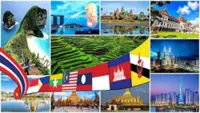Oil spill composite image from Inquirer/PDI file photos
MANILA: As the oil spill from three sunken vessels — MT Terranova, MTKR Jason Bradley, and MV Mirola 1 — spreads across a significant portion of Manila Bay, contaminating the waters of Cavite, Bulacan, and Bataan, authorities are issuing urgent warnings about the severe health risks posed by exposure to this environmental disaster.
While the government, environmental organisations, and health authorities intensify their efforts to manage the escalating crisis, the public is strongly urged to take preventive measures.





